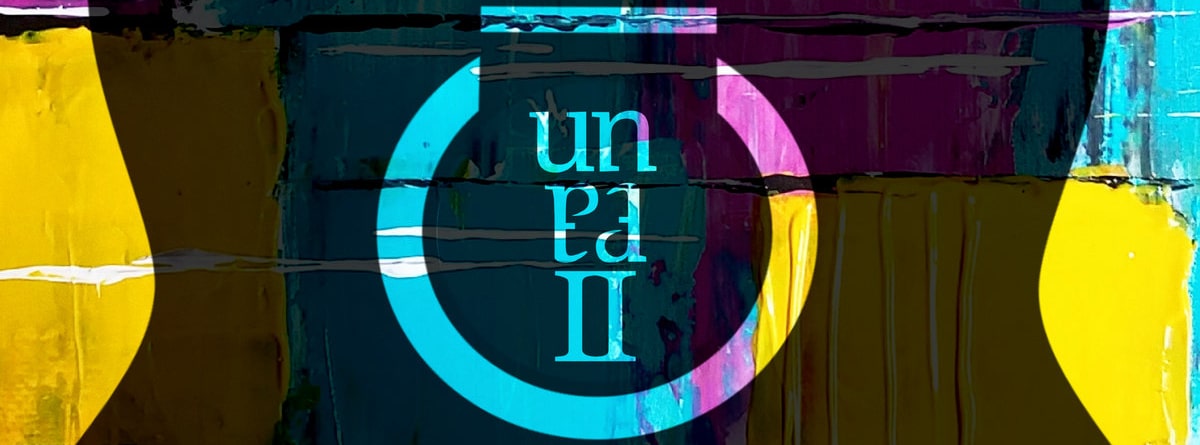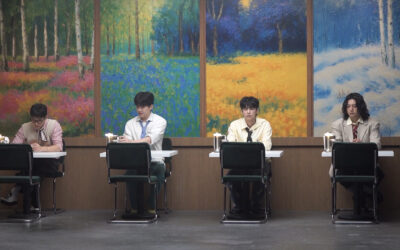Great Expectations
“I don’t want to buckle beneath the weight / Of the vows I spent my whole life trying to make“
This lyric, taken from the chorus of “The Ride (Hold On To Me),” was one of the first lines I wrote for the song, back in mid-2020 when the idea of composing “sequels” to the songs from my recently-released debut album Unfall was new and only gestating. And as I penned these words about “the vows I spent my whole life trying to make,” it would turn out that I was closer than expected to finally taking my marriage vows. The woman I would soon start dating became my bride just one year later, in mid-2021, when we were both right around thirty years old. Combining our experiences together, that adds up to somewhere between five and six decades of expecting to eventually get married; thus our wedding day was front-loaded with the massive expectations that come from fifty-plus years spent deeply longing to be married.
Do you feel the weight of that? I sure did (and still do). Perhaps you yourself are married and recall those week-one, month-one, or year-one reactions where you’d say to yourself, “This isn’t at all what I expected.” There’s a heaviness to it, one that stares us straight in the eyes every time we attend a wedding and hear vows taken along the lines of: “For better, for worse, for richer, for poorer, in sickness and in health, to love and to cherish, till death do us part.” It’s certainly not a mistake that a ceremony as joyous and celebratory as a wedding takes a vital and solemn moment for each spouse (and everyone present) to focus on the topics of death, sickness, financial strife, and even the generalized idea of everything getting “worse.” For most people and most marriages, these aren’t just possibilities: they’re inevitable.
For every couple that takes “till death do us part” seriously (and surely most couples at least begin with the bright-eyed idealism that their union will last forever), there’s a looming anxiety urging you not to mess everything up. In the first pre-chorus of “The Ride,” I sing, “We so quickly got off course / From when I promised you something stable.” It doesn’t take long for promises to be broken, for vows to not be kept perfectly. I would go so far as to say that there’s never been a married couple that managed to perfectly fulfill these standard vows — who always fully loved and cherished one another, whose adoration and devotion were never diminished by financial woes or health complications, etc. Therefore we strive for some satisfactory level of fulfillment, acknowledging that perfection is off the table. But how many imperfect vows and broken promises can your spouse endure before she’s had enough? And how long can you take it in return?
These are merely the big, existential challenges that weigh down your marriage. This doesn’t even get into those years’ worth of expectations that I mentioned earlier. Maybe your entire union started off on the wrong foot because your husband didn’t dance with you during the reception as much as you’d hoped. Maybe your first few weeks living together turned into a nightly nightmare because your spouse doesn’t appreciate cuddling as much as you do and keeps the thermostat five degrees lower than you can bear. Maybe the sweeping romance and displays of effort you’d grown accustomed to throughout dating immediately disappeared after the wedding day and you’re not sure where they went.
In other words, things got real tough real fast. What are you going to do about it?
More Than a Roller Coaster Ride
“We can’t merely be along for the ride / Passivity would break us“
Fellow churchgoers can likely attest to the somewhat embarrassing reality that we rarely remember anything we’re taught during Sunday morning sermons. The gist of the most recent sermon might stick in your head for a few days, but for the grand bulk of us, years and years’ worth of weekly sermons can be narrowed down to a minuscule sliver of messages, quotes, or takeaways that we readily recall.
Among those lifetime takeaways for me was the first time I heard a pastor preach about the passivity of Adam during the famous “Fall” story found in Genesis 3. On the surface, the basic story we’re all familiar with is that the first woman, Eve, ate the forbidden fruit — marking the first disobedient act of humanity — following a conversation with a devious talking serpent (revealed much later on to have been the devil himself), and this decision by Eve is what brought the curse of sin upon all of creation.

However, as a work of ancient literature, the Book of Genesis is an absolute masterclass in subtext, with boundless deeper meanings and subtler messaging to be found when one excavates the richness of its language and details. In this story in particular, the text is constantly begging the question: Where is Eve’s husband during this? Adam allows his wife to be fooled by the devil, then he doesn’t even put up a fight when following her actions to also eat the forbidden fruit. The fact that his role in this story amounts to merely nothing is precisely the point. He displays zero signs of protection, discernment, conviction, or leadership. He was given authority to rule over the garden and command the animals, yet instead of tossing the serpent aside and forcing it to exit his territory, Adam allowed evil to slither in underfoot and usurp his rule and reign over the garden; Adam could have and should have kept his wife from being deceived, but he didn’t.
Thus one could argue that, while the first outwardly and explicit sin was Eve eating the fruit, the first inward and implicit sin was Adam’s passivity. These are two sides of the same coin, representing the two evils that we all face every day: sins of commission (the wrong deeds we do) and sins of omission (the good deeds we leave undone). To this day, passivity continues to ravage mankind, as the primordial form of wrongdoing comes in a form which we so easily convince ourselves isn’t wrong at all: doing nothing.
Passivity is the silent murderer of marriages, poisoning couples over the course of months, years, even decades, until the union feels unfixable and the problems feel unsolvable. It’s for this precise reason that I think one of the worst metaphors for the ups and downs of a marriage would be a “roller coaster.” As I sing in my song “Matter” (to which “The Ride” serves as a sequel), “Hard times come and hard times go / Riches comes and riches go.” Yes, life certainly feels like a roller coaster sometimes, and the seasons of a marriage can flip on a dime from being terrifying to thrilling to nauseating to elating. But on a roller coaster, all you need to do is sit there and let the journey happen to you. Your own choices won’t affect it; your enjoyment of the twists and turns won’t keep them from twisting and turning accordingly. You could black out and still arrive safely at the end of the coaster, unconscious yet unscathed.
I believe more fitting metaphors would include the likes of pedaling a tandem bicycle through a hilly town, where the conjoined effort of straining up a steep incline makes it all the more fulfilling and relieving to coast down the decline on the other side of the hill; or piloting a plane, where having dual pilots to share the duties heavily increases safety and decreases stress, even though one pilot would be able to keep the plane steady and straight for short periods of time; or working the front car of a train, where you can take turns between which of you is the loco pilot, making sure the train is operating, and which of you is the stoker, making sure enough coal is being shoveled into the engine; I could go on, but I’m sure you see the trend. The best metaphors require active participation from both parties, where it is possible yet neither efficient nor sustainable for one person to do all of the work. In all of these scenarios, the couple can still arrive at their destination on the efforts of a single spouse, but the passivity of the one becomes a double burden on the other, multiplying their efforts and creating a weary exhaustion by the time the destination is reached. (What the “destination” is within these metaphors, I’m not sure… don’t overthink it.)
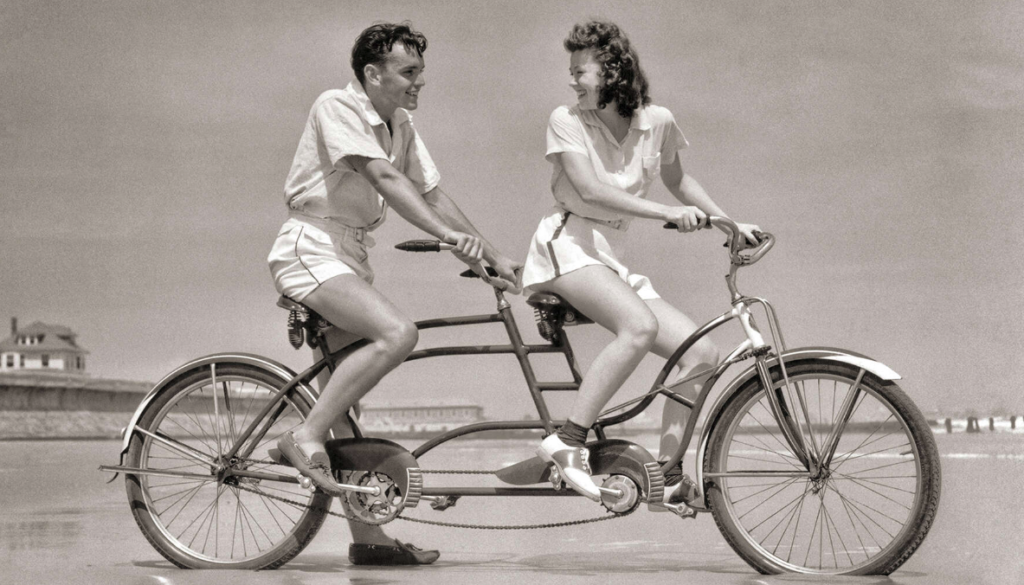
Passivity. Inactivity. Neutrality. Coasting. Numbness. Succumbing to these alluring, ever-present, and slippery traps does not immediately lead to death; arguably, we’re all guilty of these harmful dispositions, whether they last for significant seasons or whether they come and go in fleeting moments. But it’s never a choice (or a reaction) that stays in isolation, affecting you alone. By its very nature, it will have negative effects on your spouse and your marriage, even if you’re doing your best to hide it, even if your romantic and emotional passivity comes under the guise of overworking yourself at your job or needing a season of rest or dedicating yourself fully to your children. You can spin your legs and huff-and-puff so that it sounds like you’re still working hard from the backseat of your tandem bicycle, but the best acting won’t keep the person up front from feeling the extra weight that they’re now carrying.
I do not know the answers for how to maintain the most healthy and interconnected marriage, but I do know that the answer is not to regulate how active or passive your spouse is, to hold them to the constant expectations of 100% effort, 100% emotional availability, 100% romantic intentionality, or whatever else you might be wanting from them. This will only lead to bitter grudges and jealous disappointment in your spouse’s imperfections until you finally feel convicted by the hypocrisy of holding your spouse to a standard that you yourself cannot keep.
The best answer that I have [although marriages can admittedly get far more complicated than what I’m about to recommend, and inasmuch as is possible within a single article, I do attempt to address some complications towards the end of this article] is to focus on your own fight against the lures and lies of passivity. Don’t demand perfection from yourself; just begin by trying to be more active and less passive today than you were yesterday. Open yourself up to self-analysis by looking at your daily habits and rituals, by being suspect of the ways your respond and react to the members of your household. Are there things you do out of mere duty that you can inject with some extra meaning or passion? Can you see any actions or inactions that derive from a desire to coast rather than from a sense of purpose?
By seeking to love and serve and cherish your partner with this level of steadily improving intentionality, you can be more prepared for the seasons when your spouse will inevitably stop pedaling or fall asleep at the controls of the airplane. It might not be the wisest course of action to begrudge your spouse in the moment that you recognize their passivity, as soon as you feel the extra weight on the bike, and it might be best to finish pedaling up the incline before addressing the lack of assistance you received through that struggle. It won’t be fun in the moment, but by being prepared to take on the burden of your spouse’s passivity for this short stretch, you will hopefully enliven and inspire your spouse to be ready to take on your burden when you eventually enter your own season of detachment, numbness, etc.
An entirely one-sided relationship is a thoroughly different situation (and a heartbreaking one, at that), but even then, the solution to the one-sidedness is rarely found in scolding the passive partner, in forcing them to fein outwardly effort and care, or in joining them on their level, thus demoting the relationship into a no-sided one. Instead, taking measures to gently restore and rebuke them into remembering their vows should coincide with your ongoing commitment to keeping your vows, to piloting the train and keeping the marriage on the rails. Again, I don’t want to spout advice as if I have all the answers, but I’m especially confident in a few of my conclusions, including this one: it’s a recipe for disaster to make your own care and effort contingent upon the amount of care and effort you’re receiving.
The lyrics of “The Ride” explore internal hardship in the first verse and external hardship and tragedy in the second verse. In that second verse, the lyrics quickly take a positive spin: “Tragedy is approaching from all sides / Are you threatened to forsake us? / We can’t rein it in or take it in stride / It beckons to remake us.” Handling our internal hardships is so much more difficult and more pivotal than the external and circumstantial hardships which we will face — in part, because our relation to our internal hardships will determine how ready we are to endure and healthily grapple with the external ones. As Paul writes in Romans 5, “suffering produces endurance, and endurance produces character, and character produces hope.” Our circumstantial upsets and worldly woes will put our marriages to the test, and the more healthily that we endure these periods of suffering, the more mature and hopeful we will become on the other side of them. And if you and your spouse have already endured internal, relational struggles with intentional commitment to lovingly keep your vows to one another, then you will become the type of hope-filled, unified couple that cannot be torn apart by the turbulence of natural disasters or medical bills or life changes. As Paul goes on to say, “hope does not put us to shame.”
Tragedy beckons to remake us, and if we’re ready for it, we can welcome it. We shouldn’t go looking for tragedy nor should we invent our own sufferings, but when it really arrives and knocks at our door, we won’t need to run from it. On the other side of it, we might discover the deep-rooted, hard-fought relationship that we’ve been longing for all along. And if one of you stumbles and fails on your way through the trial, maybe you can look up to your spouse and see the type of person you aspire to become. Perhaps witnessing your spouse’s well-worn endurance and battle-born hope will cause you to fall in love with them all over again.
Obvious Subtleties & The Battle of Crait
[Warning: The following section contains spoilers for a 6+ year-old movie, but it also “spoils” some big details about this song which I would love for listeners to experience for themselves prior to reading about it. So if you haven’t given “The Ride” a listen or two yet, I would recommend doing so before finishing this article.]
It’s no secret that 2017’s The Last Jedi, perhaps one of the most divisive films of the internet age, is one of my favorite movies of all time. It has about as many legions of haters as it has legions of devotees who think it’s a masterpiece. Yet regardless of which side you fall on (and statistically speaking, it’s most likely that you fall directly in the middle of those two extremes), the film possesses a few praise-worthy traits upon which nearly everyone agrees, such as the stunning art direction and the franchise-best cinematography.
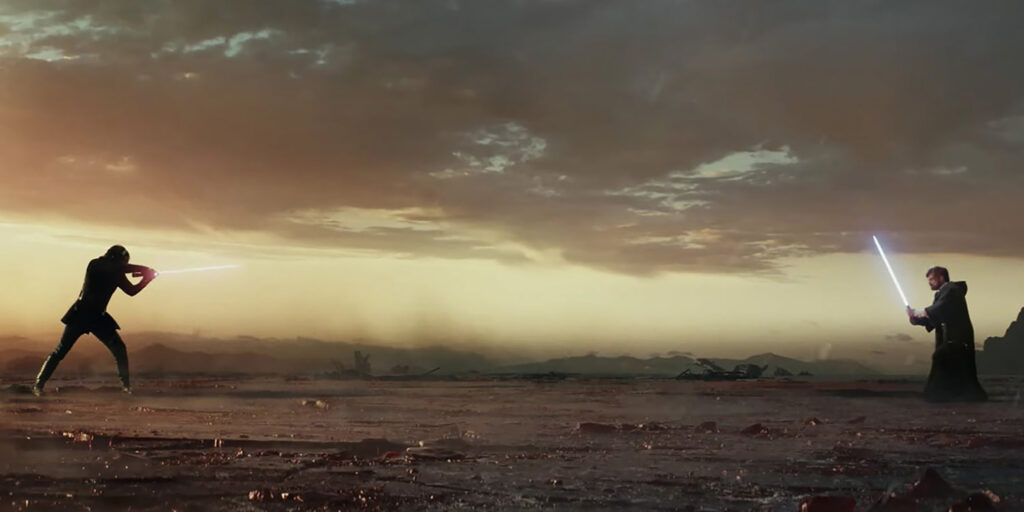
Another thing people tend to agree about is that writer/director Rian Johnson pulled off an absolute magic trick during the climactic final battle of the film (referred to as the Battle of Crait, taking place on a planet covered in salt). In this scene, the legendary Luke Skywalker makes a triumphant return to save the rest of the heroes and face off against the main villain. However, what we learn towards the end of the scene is that Luke is not physically present; he’s projecting himself across the universe to appear as if he’s there.
Here’s the reason why this is a magic trick: ask anyone, and 9 out of 10 viewers will tell you that this twist came as a total shock to them the first time watching the movie — even though Johnson provided a constant slew of clues to tip viewers off to the twist. The evidence was right before our eyes, yet we missed it. For example:
- Luke arrives looking slightly de-aged, with the haircut seen in flashback scenes rather than the hairstyle he’d worn in his most recent appearance.
- Luke gets blasted with an insane barrage of blasts which should have killed him, yet when the dust settles, not only has he survived, but none of the dust settled on his person — not even his aforementioned hair was displaced.
- For those with a keen eye toward the saga’s details and chronology, Luke pulls out a lightsaber which he no longer owned; in fact, from where we last saw him, he shouldn’t have possessed a lightsaber whatsoever.
- Here’s the big one: it was established multiple times that when people step on the planet’s white salt, it turns red. Yet we see multiple footsteps made by Luke (the movie is really making no attempts to hide it), and the salt beneath his steps remains white.
These “obvious subtleties,” as I’ve come to call them, became a huge inspiration for how I ended up writing “The Ride.” But before I reveal what “obvious subtleties” I hid within the lyrics, let me first ask you a question:
If I told you that a song contained all of the following words, what would you assume that this song was about?
buckle, harnessed, halting, rein, ride, saddled, stable, stride, train
I assume you see it, yes? From these words, you would guess something along the lines of horseback riding, and you would be correct — except… each of these words appears in the lyrics to “The Ride” before the section of the song (the bridge) which is explicitly about riding a horse. The word “horse” never appears in the song, but I intentionally planted equestrian vocabulary and homonyms throughout its first two and a half minutes, before the bridge dives into a minute-long narrative about the song’s married couple mounting a horse and heading off on a ride together.
This lengthy bridge stanza presents the physical embodiment of all the preceding lyrics, with the horse representing the “hard times” from the chorus and the “tragedy” from the second verse. Once the horse takes off, at a slower starting speed, the couple is having a pleasant experience; stereotypically, most married couples would attest to the early weeks and months (the “honeymoon phase”) being their easiest, most carefree season. But once the horse unexpectedly picks up its pace — whether thanks to a high mortgage or a lost job or a car wreck or a miscarriage or any number of factors swirling together simultaneously like a tornado — the ride no longer feels so pleasant. It might feel terrifying. Life-threatening.
As the lyrics escalate, the journey grows increasingly dangerous while the destination becomes increasingly unknown. You didn’t ask for this, and you had no idea these things would come to pass, but now you’re here and there’s no way to dismount. As the bridge crescendos, the narrator arrives at this simple conclusion as his only way forward: “Hold tight with whatever trust we’ve collected.” You might be at a point in your marriage where trust is slim, but when calamity hits, you’ll take a chance on that sliver of trust and hold on for dear life. And once you’ve endured this tragedy for a while (even if it shows no signs of stopping), hopefully you’ll end up with more mutual trust than you started with.
Ironically, I wrote this whole stanza of lyrics prior to getting married in 2021; the finalized verse and pre-chorus lyrics weren’t written until 2023, but the bridge dates back to 2020. Yet while those lyrics were penned only in theory, looking ahead at the future hope of getting married, these words ring even more true to me now, a few years into marriage, than they did when I first wrote them. And that’s largely because, in early 2022, my wife and I experienced a season that felt unendurable. In the span of a month, a tree fell onto the house we had just moved into, a very close relative was diagnosed with cancer, and my wife became pregnant with what soon turned out to be a molar pregnancy. (In short, if you’re unfamiliar, a molar pregnancy refers to a chromosomal abnormality where, instead of becoming pregnant with a human life, you become pregnant with a tumor: a potentially life-threatening or cancerous tumor which needs to be removed surgically.) The fallout from those three events hovered over us for the remainder of 2022 (which continued to be a difficult year for a handful of related and unrelated reasons), yet while I wouldn’t wish any of those occurrences on anyone, I would also be lying if I didn’t say that, on the other side of it, my wife and I had developed greater trust and a deeper emotional care for one another.
The final bit (pun intended) of “obvious subtleties” is rather silly. While finalizing the lyrics to the pre-choruses, I stumbled into yet another way to seed this equestrian foreshadowing. It arose as an extension of my recent fascination with extending rhyme schemes for much longer than most songwriters would deem necessary. To boil the topic down to its most basic elements, the most common rhyme schemes that you’ll hear in music are AABB and ABAB: the former, where two lines in a row end with rhyming sounds followed by two lines that end with a different rhyming sound, or the latter, where every other line rhymes. According to generally accepted best practices for modern songwriting, you should keep your like sections consistent: if your first verse follows the ABAB rhyme scheme, then your second verse should be CDCD (as in, you’ll most likely use new rhyming sounds, but the pattern should be the same).
I explain all of that because, in many of the songs I’ve been writing most recently, I’ve opted to do two different things: 1) extend rhymes across entire stanzas (AAAA), and 2) maintain identical rhyming sounds across multiple like-sections of a song (for example, instead of verse 1 ABAB followed by verse 2 CDCD, my verse 2 would also be ABAB). I utilize both of these practices in “The Ride.” The chorus (if you will forgive me for a few slant rhymes) is: AAAAAA (or, to be technical, EEEEEE). Meanwhile, both verses follow ABAB and both pre-choruses follow CDCD.
I bring all of this up to arrive at the “rather silly” detail I prefaced a few paragraphs up, which at this point might feel rather anticlimactic, but hey, I’ve got to share this with someone, right? In the pre-choruses, the “C” sound is established by the word remorse, followed by course, source, and force. In other words, four of the standout rhymes that you will have heard on your way to the bridge are perfect rhymes with the word “horse.” Is that not dumb or what? Yet as silly as it is, this was not accidental; I was truly leaning into the concept of obvious subtleties, even to go so far as to try to plant the subliminal expectation that you might be hearing the word “horse” at some point in the song. [If you’ve read this far, before I make a big topic shift in the following section, I would love for you to comment below about how long it took you to pick up on Luke’s Force projection or if you happened to catch on to any of these equine lines before reading this post!]
Mothers, Mares & Metaphors
It’s worth stating that, for me, this imagery comes from a very personal place. My mom (pictured below) rode professionally, spending many years of my childhood competing in dressage tournaments. I would often go to the stables with her and watch VHS movies or do homework while she groomed her horse Cammie and trained her. As such, I had many opportunities to ride for myself — but one was all I needed.

I still vividly remember entering a round pen (a smaller enclosure meant for riding in circles) and using a step ladder to mount Cammie for my first solo ride. Starting off, it was great. A small trot was perfect, and I felt like I was getting the hang of it. That feeling of assurance was quickly dashed when she sped up into what surely felt like a gallop. I was petrified, and I had no clue (despite my mom’s best efforts to instruct me from a few feet away) how to make the horse slow down or stop. I wanted off, but in that moment, the safest thing I could do was to stay on and do my best not to fall off. As scary as the experience was, exiting mid-gallop would have been far more painful than enduring the discomfort and fear of the ride.
That moral takeaway is, for me, the beating heart behind this song: the conviction that the best thing we can do during trials and hardships is to ignore our flight responses, overcome our fears, and endure them as gracefully as possible, with the confidence that we will become better, stronger people on the other side of fighting the long fight and suffering well. Easy does not equal good, and the easiest way to navigate through life is to run away in the face of difficulty or discomfort. “Till death do us part” is a pivotal piece of the traditional wedding vows precisely because the institution of marriage is intended to be a lifelong one — because the greatest purposes and joys and benefits of a marriage are not the highs of the honeymoon phase but are rather the fruit that a couples reaps after decades spent sowing a life together, through thick and thin.
I should clarify here that every metaphor has its breaking point and most life lessons have their exceptions. With this song and this blog post, I do not mean to condemn anyone who has already suffered through a divorce, and I also do not mean to pressure anyone to stay within a marriage that is dangerous or already dead. While I do believe that we live in an age where many spouses are in need of encouragement to stick it out through tough patches, I also acknowledge that, on the other side of the spectrum, there are spouses who need to be encouraged to seek separation or divorce from spouses who have effectively nullified their vows through adultery, abuse, or abandonment. I cannot speak into the particular circumstances of everyone who is reading this, but I do hope that each of you can sift through my words to find that which will serve you in the most helpful and healthy manner.
Stream Unfall II:
Spotify | Apple Music | YouTube
Download Unfall II:
Bandcamp | Friends Club (with bonus tracks)
Read the Lyrics & Learn About the Other Songs:
Click Here
The six articles in this series, about each song on the new EP titled Unfall II, will conclude with a section explaining my methodology for writing “sequels” to songs from my debut album Unfall, including explanations of all the musical and lyrical connections between the songs. If you would rather listen closely and figure out the connections for yourself, please feel free to skip this section – or come back later to see how many connections you found!
The Secrets Behind the Sequel
Sequel Method
By “sequel method,” I’m referring to the manner in which this song functions as a “sequel” to its progenitor from Unfall; and for each song, I’ll be using Pixar films as my examples, since we understand sequels to films more readily than we do for music. Is it a narrative follow-up that picks up exactly where the original left off (Incredibles 2) or after a significant time gap (Toy Story 3)? Has there been a switch in main characters (Finding Dory)? Is it a prequel (Monsters University)? Or is this a spiritual sequel, connected thematically to the original (WALL-E is to space as Finding Nemo was to the ocean) or a spin-off (Lightyear)? I would say that “The Ride (Hold On To Me)” is most like Toy Story 2. It can narratively be understood as a song from the same narrator as “Matter” and about the same love interest, but the sequel jumps a few years forward into their relationship, adding layers of complexity with a sense of mourning that the original did not have, similar to how the character of Jessie injected the series with a new level of sadness and seriousness. It would also be fitting to compare these songs with the Toy Story franchise since the first Toy Story was Pixar’s very first film, meanwhile “Matter” was the first song I ever released as a solo artist.
Musical Connections
One of the biggest surprises for me, over the course of finishing “The Ride,” was how nearly every musical connection between this and “Matter” ended up on the cutting room floor. The riffs and movements you hear sprinkled throughout the verses (and the final chorus) went through a few sets of iterations, many of which were callbacks to “Matter”s opening riff and chord progression, but as I sat with those ideas, they never felt right. I consistently came back to thinking that this song deserved its own musical identity, and so with the exception of the opening melody of the choruses, everything in this song is its own. I’m glad I made that decision.
Lyrical Connections
There’s a throwaway reference to “Matter” in the first stanza of the lyrics, with the line, “No matter what it takes us,” but ignoring that, the main connection between these two songs is how the choruses start. “Matter”s chorus states, “Hard times come and hard times go, it’s no matter,” while “The Ride”s chorus inverts this idea with the line: “Hard times come and sometimes stay.“
This inversion is the backbone of the ties between these songs. I still love “Matter” and its message, but there is a frivolity to its lyrics that I wanted to challenge. Yes, in the grand scheme of things, hard times come and go, riches come and go, people come and go, etc. But in our day-to-day experience, what if a hardship arrives and sticks around for years? For decades? This was the driving impetus behind the song, and the chorus (based on this lyrical starting point) came together rather quickly, in mid-2020. The chorus lyrics and melodies have stayed the same since 2020, and I finalized the bridge lyrics in 2020 as well. Yet as seemingly easy as those pieces fell in place, “The Ride” would become one of the final Unfall II songs to be finished. Even its title was a last-minute decision!
From 2020 through 2023, I penned numerous versions of these verses, starting a great many and even completing a few workable drafts which would eventually be thrown out. One goal mentally hampered me for years: my desire to recreate the verse structure I’d used on “Matter.” There’s a subtle trick in that song’s verses, using what I call “floating words,” where a few standalone words can be applied either at the end of the preceding line or at the start of the following line. For example, here are two different (but equally accurate) ways of reading the lyrics from the first verse of “Matter,” creating distinctions in the emphases and interpretation:
Version 1: “Home could merely be the place we sleep / Alone with plans and promises to keep / Alive to make all of my dreams come true / Or die before making my big debut“
Version 2: “Home could merely be the place we sleep alone / With plans and promises to keep alive / To make all of my dreams come true or die / Before making my big debut”
This is ultimately tangential to the end results of “The Ride,” but it’s an important part of this song’s history, that I tried and failed so many times to recreate this “floating words” structure. I would argue that my desire for “Matter”s sequel to utilize floating words is the reason why I finished writing this song in 2023 instead of in 2020. I tried variations on this concept, such as having floating phrases rather than single words, but every failed attempt became a distraction from the core meaning of the song, as I would get distracted from what I was really trying to say, in a vain attempt to make this gimmick work. It wasn’t until I gave myself the freedom to try something entirely unrelated that I tapped into the draft that would evolve into the final lyrics.
So that effectively brings this section to a conclusion: “The Ride” in all of its original brainstorming was supposed to have musical moments that wink back at “Matter,” lyrical references, a mirrored lyrical structure, plus a chorus that repeats elements of “Matter”s chorus. But in the end, “The Ride” became, to my genuine surprise, the sequel with perhaps the fewest direct connections or recycled ideas. Thanks to this, it not only stands on its own merits better than most of the sequel songs, but it’s also one of my favorite songs I’ve ever written. Thank you for listening and for reading.

